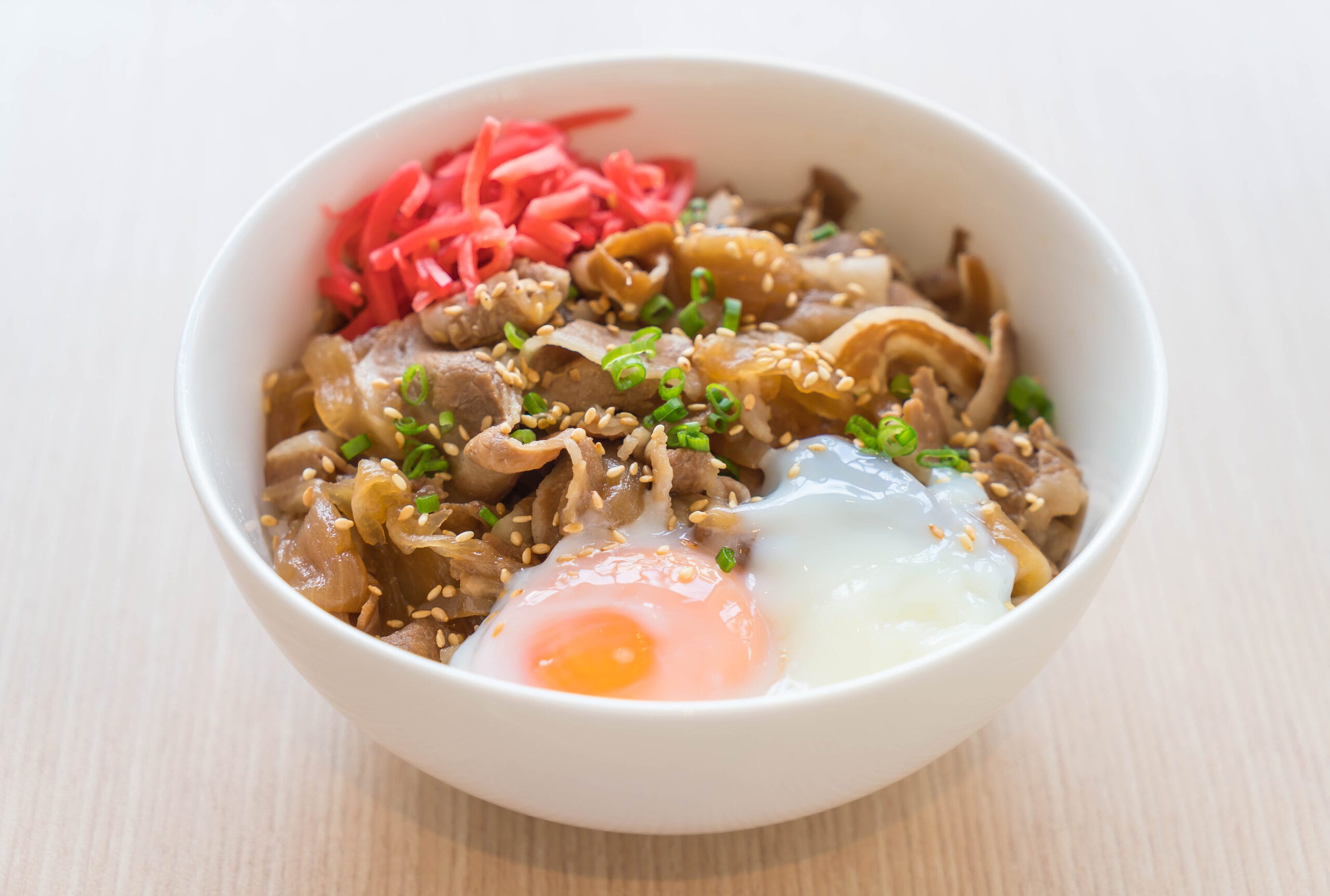- Prepare Ingredients
Slice the onions thinly and keep the sukiyaki beef ready. If frozen, thaw before use.
- Cook Onions and Broth
Heat oil in a large skillet over medium heat. Add sliced onions and sauté until soft and translucent. Add white sugar, soy sauce (Kikkoman), mirin, and 1 cup of water. Drop in the chicken cube and let it simmer for about 3–4 minutes to develop flavor.
- Add Beef and Simmer
Add sukiyaki beef slices into the simmering mixture. Gently stir and let it cook for 5–7 minutes until the beef is tender and fully cooked.
- Thicken the Sauce
In a small bowl, mix 2 teaspoons of cornstarch with 1 tablespoon of water to form a slurry. Add this slowly into the pan and stir until the sauce thickens slightly.
- Assemble the Bowl
In individual bowls, place a generous serving of steamed rice. Spoon the beef and onion mixture with sauce over the rice.
- Top and Garnish
Top each bowl with a fried egg and a sprinkle of sesame seeds for added flavor and texture.
- Serve Hot
Enjoy your Gyudon immediately for the best flavor and texture.
NOTE -Values may vary depending on toppings and rice type.
- Calories:480 kcal
- Protein:25 g
- Carbs:50 g
- Fat:20 g
- Fiber:2 g
- Sodium:900 mg
- Sugar:10 g
Gyudon, or Japanese Beef Rice Bowl, is a beloved comfort food in Japan. This dish features thinly sliced beef simmered with onions in a savory broth made of soy sauce, mirin, and sugar. Served over steamed rice, it’s a quick, satisfying meal that balances simplicity with bold flavors.
The History of Japanese Beef Rice Bowl
Gyudon has a rich history dating back to the late 19th century. It originated from gyunabe, a beef hot pot dish introduced in Yokohama in 1862. Over time, people began pouring the flavorful broth over rice, creating gyumeshi (beef rice). Eventually, the dish was renamed gyudon, with “gyu” meaning beef and “don” referring to the donburi rice bowl.
Today, gyudon is a staple in Japanese households and restaurants, particularly in fast-food chains like Yoshinoya. Its affordability, quick preparation, and delicious taste make it a favorite among busy professionals and students.
Why Japanese Beef Rice Bowl Is a Must-Try
- Authentic Japanese flavors – A perfect blend of umami-rich ingredients.
- Quick and easy – Ready in under 30 minutes, ideal for busy schedules.
- Customizable – Adjust spice levels, swap proteins, or use alternative grains.
- Budget-friendly – Uses thinly sliced beef, making it an affordable meal option.
Health Benefits of Japanese Beef Rice Bowl
Gyudon is not only delicious but also offers several health benefits:
- High in protein – Thinly sliced beef provides essential nutrients for muscle repair and energy.
- Rich in antioxidants – Onions help reduce inflammation and support heart health.
- Balanced meal – When paired with rice, it offers a good mix of protein, carbs, and fats.
- Quick energy source – White rice provides fast-acting carbohydrates, making it a satisfying meal choice.
Considerations for a Healthier Gyudon
While gyudon is a comforting dish, there are a few things to keep in mind:
- Sodium content – Soy sauce and the chicken cube add salt. Opting for low-sodium alternatives can make the dish healthier.
- Refined carbs – White rice may cause blood sugar spikes; replacing it with brown rice or cauliflower rice provides a lower-GI option.
- Oil usage – Choosing heart-healthy oils like avocado or olive oil can improve the fat profile of the dish.
Serving and Customization Ideas
Gyudon is incredibly versatile, allowing for various customizations:
- Vegetarian option – Swap beef for tofu or mushrooms and use soy-based sauces.
- Gluten-free alternative – Use tamari instead of soy sauce and ensure mirin is gluten-free.
- Spicy version – Add chili flakes or a drizzle of sriracha for extra heat.
- Toppings – A fried egg, sesame seeds, or pickled ginger enhance the dish’s flavor and texture.
















